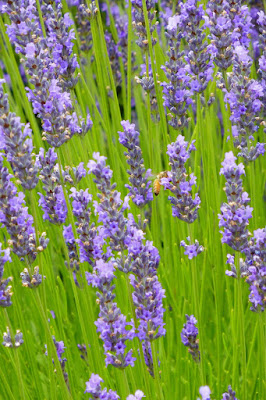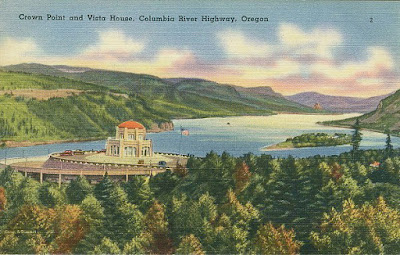Kenneth Grahame's classic, and so very British,
The Wind In The Willows is one of those books that can be read every couple of years, without ever tiring of it
. And every time I do, I suddenly want to get out on a river. And like Ratty and Mole, go messing about, in a boat:
 |
| Messing About In A Boat |
"This has been a wonderful day!" said [the Mole], as the Rat shoved off and took to the sculls again. "Do you know, I've never been in a boat before in all my life."
"What?" cried the Rat, open-mouthed: "Never been in a—you never—well I—what have you been doing, then?"
"Is it so nice as all that?" asked the Mole shyly, though he was quite prepared to believe it as he leant back in his seat and surveyed the cushions, the oars, the rowlocks, and all the fascinating fittings, and felt the boat sway lightly under him.
"Nice? It's the
only thing," said the Water Rat solemnly as he leant forward for his stroke. "Believe me, my young friend, there is
nothing—absolute nothing—half so much worth doing as simply messing about in boats. Simply messing..." he went on dreamily: "messing—about—in—boats; messing-------"
"Look ahead, Rat!" cried the Mole suddenly.
It was too late. The boat struck the bank full tilt. The dreamer, the joyous oarsman, lay on his back at the bottom of the boat, his heels in the air.
 |
| Packing A Picnic Hamper |
Along Ratty's upper reaches of the Thames or the River Pang or wherever it is he happens to live, being out on the river is a peaceful experience. Many centuries of landscape domestication, since the time of the Roman occupation, had tamed the flow, and whole series of weirs, locks, and diversions into canals resulted in calm, slow moving streams, perfect for a relaxed, dreamy day out in a boat.
 |
| On The River |
Unfortunately, we don't live in England; here in the western U.S., the rivers tend to run fast and relatively wild. Boaters out west take their fun seriously, often in deadly earnest: zooming up and down the Rogue or Klamath or Snake Rivers in supercharged jet boats; running whitewater rapids in tiny solo kayaks or giant 20-man inflatable rafts full of screaming tourists; or pulling skiers at top speed around reservoirs in 500 horsepower water hot rods with dodgy mufflers. Not much chance of a quiet, peaceful day out, sculling around a slow moving river in a pram or a skiff - and, it's difficult finding a small row boat out here, since no one does that sort of thing.
A few months ago, at an acoustic instrument jam party, I happened to mention, after a couple of beers, that I was looking for a boat. Friend Randy (a genius mandolin, fiddle and guitar player) said "Well, how about a canoe? I have one I don't use any more." A canoe... wow... I hadn't thought about a canoe. So, okay, done thinking, how much? "Does $100 sound good to you? I'll throw in a couple oars, too." Sold, on the spot, sight unseen, let's shake on it, and have another beer.
It turned out to be a really nice, high quality canoe: a Northwoods brand, made in Spokane, Washington. About 15 feet, not too heavy, and unsinkable, which is some kind of relief, less to worry about. Fits nicely atop the roof rack on the Oasis:
Okay, we have a canoe, now where can we have a relaxed,
Wind In The Willows type of day on the water? We don't live right on the riverbank like Water Rat does, yet it would be nice to have some aquatic fun fairly close to home. The Willamette River runs through town, but it's not exactly peaceful and calm - the current is strong enough that all boating is a one way trip downstream, with numerous shoals and rock hazards: fun in a different way.
There are some stretches of the Willamette that back up behind shallow dams, bars, and locks, with water calm enough for leisurely paddling, but those are some distance north, closer to Portland, and not here. A few lakes and reservoirs are also within a 100 mile radius, but that's also not here.
Check out this spy satellite image:
That's about smack dab in the middle of the greater Eugene-Springfield-Duckburg mini-megalopolis. South of the river you can see the university (Duck U!); north of it is the big football stadium (Duck U 2 Field), and the beginnings of inner outer suburbia. The big, fairly empty, fairly green area in between is a city park, formerly a giant sawmill, and now a sort of green-belt semi-natural open area. With bike and running paths, three pedestrian bridges over the river, a soccer field, an outdoor events area, musical amphitheater, kid's science center, and lots more, it's a cool place for sure.
In the center of the shot above, there's an oblong-ish pond, with a waterway coming into it from the east, and flowing out towards the west. That stream was originally a mill race for the old sawmill, and the pool was a log holding pond for that mill.
Not so long ago, the Cascade Range east of here
was swarming with loggers, busily leveling the old growth forests, and
sending giant logs down the river to the big sawmills along the Willamette in Eugene and Springfield, all of which are now shut down. Except for a few books, such as Ken Kesey's monumental
Sometimes A Great Notion, it's a part of Oregon history that has mostly gone down the digital memory hole. And in our town, now populated by hipsters, college students, retirees, californians, and transient derelicts, most people are completely unaware of this area's recent past, at the very tail end of the Industrial Age.
A web search brings up no mention of the name of the old mill north of the university, and the city's website would have you think this was always a park. In any case, after that sawmill closed down, someone came up with a plan to turn its mill race into a couple miles of boating waterway - a great idea.
Over the border to the east, the city of Springfield has allowed the upstream portion of the waterway to get choked up with fallen trees and other debris - it's still marked as a "canoe path" on their park maps, but you can't actually canoe it. Maybe someone should go talk to Mayor Quimby:
Possibly due to a more efficient parks department in our town, the canoe way in Eugene is open, and beautiful.
Over time, the banks of the old mill race have gotten nicely grown over with grasses and shrubs, reeds, lilies
and other aquatic plants, as well as the willows, alders, and other trees along the
stream. Also, what's really great is that hardly anyone knows this
boating way exists, and whenever we're paddling around here, there's no
one else out on the water, and you rarely see another human. Besides
the faint background sounds of the city, it's easy to imagine that we're
way out in the middle of somewhere.
We took along a picnic hamper, just as Ratty and Mole would do, and had a calm and leisurely paddle. And saw a lot of birds.
This big heron landed in the water near the south bank, its huge wings spread out as it floated silently down, until it touched the surface of the stream with barely a ripple. I should have had the camera out for that, but all I could do was watch amazed.
Most of the birds pretty much ignore you when you're boating, but if you're walking along the bank, they'll fly or paddle swiftly away. On the waterway, you're just another aquatic animal. Here's a family of ducks:
The pictures are not the best - the old beater Elph pocket shooter was the bee's knees back in 2006, and it still takes shots as good as it did when new, but technology marches on, and now it's our disposable sports camera, and if it drops into the water, no big loss.
We saw a kingfisher, who would wait until we got almost close enough to take a picture, then fly a couple hundred feet downstream, laughing all the way. A few geese, but I forgot to get the camera out of the vest pocket, since we were having fun paddling along right in the middle of their gaggle. There were hawks circling high overhead; little chickadees calling from their perches on streamside willows; a cormorant dived straight down at speed, beak first into the water a long way upstream; and swallows darted quickly over the water in pursuit of their bug lunch, almost too fast to see. Didn't get a picture of a swallow, but under one of the bridges were some of their nests, built of mud, and precariously attached underneath:

It was perfect weather for a British style float on the water - mid 70s (23-25º C), mostly overcast, very light breeze. At one point we thought we were in for a soaking; the clouds got darker and disturbed looking, and you could watch sheets of rain floating earthward, but only a few drops hit the surface of the stream:
Weather like this always makes me sleepy, especially after lunch, and I'm not alone. It is said to just let sleeping ducks lie:
Along the banks there's a good variety of water loving plants; here's one of them, an unknown kind with nice yellow flowers:
Coming back down current, after turning around at the weir upstream, there was another heron on the north bank; possibly it was the same one we had seen earlier. Just so you know, the old camera has very little zoom - we were actually this close to the big bird:
It was another perfect day on the canoe way, peaceful slow paddling, enjoying the time and the place, and just messing about. In a boat.
* * *
Click or tap on any picture above to see larger, higher def images. Most photos taken with an ancient Canon Elph SD550. Excerpt from
The Wind In The Willows, by Kenneth Grahame (1908); illustrations by Earnest H. Shepard (1933). Sawmill photo courtesy Old Mill District, Bend (not Eugene), OR.



































